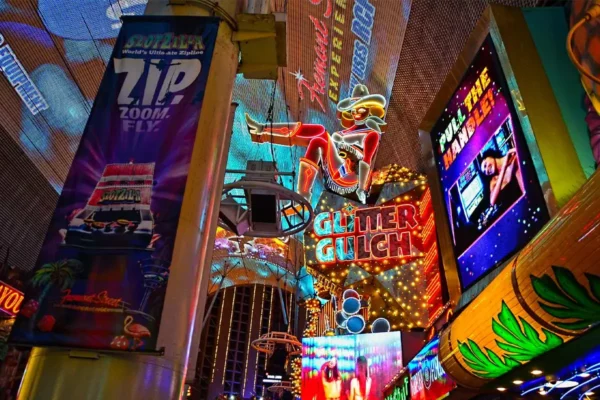by Haley Freeman
Have you been inside a classroom, department store or convention hall, with fluorescent lights flickering overhead, and felt a general ickiness descend upon you? You know the one–where the pressure builds behind your eyes, you feel slightly disconnected, and you’re ready to crawl under the nearest table and go to sleep? As a longtime sufferer of migraines, I have this experience frequently. And apparently, it’s not all in my head.
With our ongoing conversation about improving environmental standards outdoors, we sometimes forget that we spend most of our time indoors. In fact, the Environmental Protection Agency estimates that we spend more than 90 percent of our time (about 21 hours a day) indoors. The term “healthy building” is entering the vernacular of all concerned with sustainability, and new research is confirming that the state of our environment inside is as important to our health and productivity as the conditions outside.
A recent article published by the American Psychological Association entitled “Healthy Buildings, Productive People,” states that variables like ventilation, airborne contaminants, lighting and noise levels all contribute to how humans feel and think. Numerous studies are underway to quantify just how much these factors impact overall health and cognition.
One of the most comprehensive studies is taking place at the Well Living Lab in Rochester, Minn., where experts are researching “the real-world impact of indoor environments on human health and well-being,” and generating “evidence-based information that can be used in practical ways to create healthier indoor spaces.”
Research is illuminating how artificial light affects humans. Many sources confirm that the flickering of traditional fluorescent tube lighting combined with its color temperature has a measurable impact on the brain and body. For people with photosensitive conditions like migraine or seizures, fluorescents can induce adverse symptoms.
Findings also suggest that ongoing exposure to this type of lighting is unhealthy for the eyes–bad news for folks who spend their days trapped inside artificial environments where fluorescents reign. The American Journal of Public Health reported that “fluorescent lighting may increase UV-related eye diseases by up to 12 percent and, according to our calculations, may cause an additional 3,000 cases of cataracts and 7,500 cases of pterygia annually in Australia.” (Australia banned old-school incandescent lights in 2009.)
Because of recent initiatives aimed at outdoor environmental sustainability, traditional incandescent lighting has been phased out across much of the Western world and replaced with fluorescent tube lighting and compact fluorescent lighting, both of which are far more energy-efficient. One possible advantage of CFLs–those whimsical, spirally bulbs–versus fluorescent tubes is that they produce a reduced flicker effect, which is conjectured to have less impact on people with conditions like mine. However, Scientific American reported: “Magda Havas, an environmental & resource studies Ph.D. at Canada’s Trent University, says that some CFLs emit radio frequency radiation that can cause fatigue, dizziness, ringing in the ears, eyestrain, even migraines.” Oh, joy.
So what about the light emitting diodes? LED light bulbs cost significantly more than their fluorescent counterparts, but are brighter, use about half the wattage and have roughly six times the lifespan. This makes them a good value and better for the environment in the long run. Many convention centers across the country are making significant investments in LED lighting as part of their sustainability plans.
But there are also concerns about negative health effects associated with LEDs, largely stemming from the bulbs’ color temperature. The website conversation.com defines CT as “a measure of the spectral content of light from a source; how much blue, green, yellow and red there is in it. A higher CT rating generally means greater blue content, and the whiter the light appears.”
ANSES, the French Agency for Food, Environmental and Occupational Health & Safety, published a report entitled (in English): “Lighting Systems Using Light-Emitting Diodes: Health Issues to be Considered.” The report states, “Blue light is…recognized as being harmful and dangerous for the retina, as a result of cellular oxidative stress,” and identifies populations at greatest risk as children, light-sensitive individuals and workers exposed to high-intensity lighting.
The American Medical Association published similar concerns regarding LED roadway lighting and recommended “minimizing and controlling blue-rich environmental lighting by using the lowest emission of blue light possible to reduce glare.”
When Edison produced his miracle of artificial illumination and gifted (or cursed) humanity with endlessly productive nighttime hours, I’m sure he never dreamed that his invention would be the catalyst for such controversy nearly 140 years later. As we create our future world, I vote for a utopia where our indoor and outdoor environments are synced for the optimum enjoyment of all lifeforms.
For more info, visit www.welllivinglab.com
Haley Freeman is a writer and passionate advocate for the environment and sustainable business practices; Contact her at www.linkedin.com/in/haley-freeman-378b8413/.
This column originally appeared in the January/February 2018 issue of Exhibit City News magazine, p. 14. For more pictures and original layout, visit https://issuu.com/exhibitcitynews/docs/jan-feb_ecn2018.






























